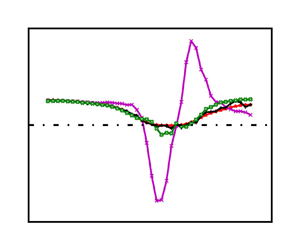Published online by Cambridge University Press: 11 April 2024

By incorporating the traditionally overlooked advective term in the wall-normal momentum equation, a new momentum integral equation is developed for two-dimensional incompressible turbulent boundary layers under arbitrary pressure gradients. The classical Kármán's integral arises as a special instance of the new momentum integral equation when the pressure gradient is weak. The new momentum integral equation's validity is substantiated by direct numerical simulation data. Unlike the classical Kármán's integral, which is limited to predicting wall shear stress within mild pressure gradients, the new momentum integral equation accurately computes wall shear stress across a broad range of pressure gradients, even in the presence of strong adverse pressure gradients that lead to flow separation. Moreover, a new pressure parameter  $\beta _\kappa$ is introduced through examining terms in the new momentum integral equation. This parameter naturally quantifies the pressure gradient's influence on turbulent boundary layers and offers guidance for applying the classical Kármán's integral. Additionally, to facilitate experimental determination of wall shear stress under strong pressure gradients, an approximate integral equation is proposed that relies solely on easily measurable variables. Validation against direct numerical simulation data demonstrates that this simplified equation provides reasonably accurate estimates of wall shear stress in turbulent boundary layers experiencing strong pressure gradients.
$\beta _\kappa$ is introduced through examining terms in the new momentum integral equation. This parameter naturally quantifies the pressure gradient's influence on turbulent boundary layers and offers guidance for applying the classical Kármán's integral. Additionally, to facilitate experimental determination of wall shear stress under strong pressure gradients, an approximate integral equation is proposed that relies solely on easily measurable variables. Validation against direct numerical simulation data demonstrates that this simplified equation provides reasonably accurate estimates of wall shear stress in turbulent boundary layers experiencing strong pressure gradients.